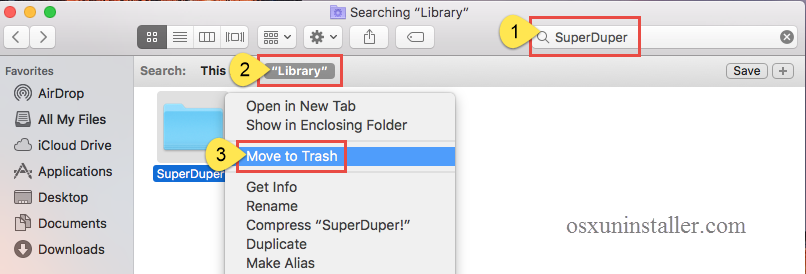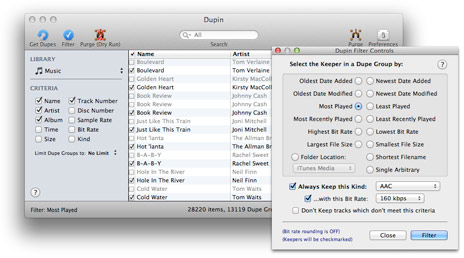
IDupe operates on a selection of tracks in iTunes. You then have three choices: 1) remove the unchecked items from that playlist, 2) do that, but also remove those tracks from the main library playlist (if you are not working on a selection of the library playlist), or 3) do both of those things, but also move the file itself to the trash. When you are ready to remove the unchecked items, reselect the group of tracks you want iDupe to operate on. It is then up to you to review the results. The duplicates that iDupe considers worthy of removal will be unchecked on the playlist when you click the "Mark Results in iTunes." button.

It will consider whether it is likely to be a loose single track, which version of an album to keep, as well as other considerations. Other potential duplicates will be ranked according to a number of criteria. They will be removed from the playlist by default when you click the "Mark results in iTunes." button. Playlist entries that refer to exactly the same file and "dead tracks" (entries that point to no file) are treated as unambiguously undesirable entries. When it scans a selection, it will make a number of judgement calls. IDupe tries to deal with this problem in a smart way. Second, there is no good way to identify which tracks are actually duplicates as opposed to different versions of the same song, the same song with different bitrates, etc. First, it offers no good way to remove duplicates while keeping one version of a track. Recent versions of iTunes have a "Show Duplicates" command. IDupe is designed to process duplicates and dead tracks in iTunes in a smart way.

Please read the following info carefully before using iDupe.


 0 kommentar(er)
0 kommentar(er)
